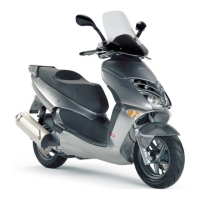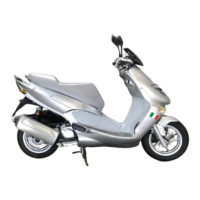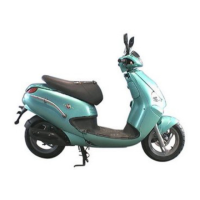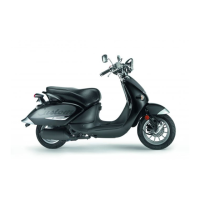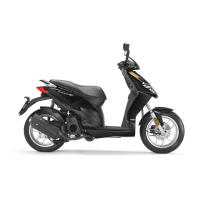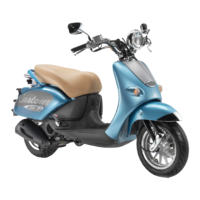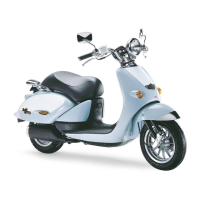CICLISTICA /
PARTE CICLO
/ CHASSIS PARTS
7 - 44
7.3.2 CONTROLLO
Controllare l'integrità di tut-
ti i componenti e in partico-
lar modo quelli che sono
indicati di seguito.
Cuscinetti
◆ Girare manualmente l'anello inter-
no (1) che deve ruotare senza im-
puntamenti e/o rumorosità.
Non si devono riscontrare giochi
assiali.
I cuscinetti che presentano questi
inconvenienti devono essere so-
stituiti.
Applicare del grasso sulle
sfere (o rulli) ai lati di ogni
cuscinetto, vedi 1.7 (TA-
BELLA LUBRIFICANTI). Operazio-
ne non necessaria se il cuscinetto
è di tipo autolubrificante.
Perno ruota
Vedi MANUALE D’OFFICINA MO-
TORE n˚929 (I-D), n˚ 930 (UK-E-F).
Cerchio
◆ Utilizzando un comparatore, con-
trollare che l'eccentricità radiale e
assiale del cerchio non superi il
valore limite.
Una eccessiva eccentricità è di
solito causata dai cuscinetti usura-
ti o danneggiati. Se dopo la sosti-
tuzione dei cuscinetti il valore non
rientra nel limite indicato, sostitui-
re il cerchio.
Eccentricità radiale e assiale
massima: 2 mm
Pneumatico
◆ Controllare lo stato del pneumati-
co, vedi 2.21.2 (PNEUMATICI).
7.4 FRENO ANTERIORE
Per informazioni generali, vedi 1.2.6
(LIQUIDO REFRIGERANTE).
Per informazioni riguardanti:
– Componenti impianto frenante
vedi 8.6.5 (IMPIANTO FRENAN-
TE).
– Verifica usura pastiglie, vedi
2.13.3 (VERIFICA USURA PASTI-
GLIE).
– Spurgo aria impianto frenante,
vedi 2.14 (SPURGO ARIA IM-
PIANTO FRENANTE).
a
a
7.3.2 CONTROL
Controle la integridad de
todos los componentes y,
sobre todo, los que están
indicados a continuación.
Cojinetes
◆ Gire manualmente el anillo interior
que ha de girar sin bloquearse y/o
sin ruido.
No deben notarse juegos axiales.
Hay que sustituir los cojinetes que
presenten estos inconvenientes.
Aplique una capa de grasa
sobre las bolas (o rodillos)
sobre los lados de cada co-
jinete, véase 1.7 (TABLA LUBRI-
CANTES). Esta operación no es
necesaria si el cojinete es de tipo
autolubricante.
Perno rueda
Véase MANUAL DE TALLER MO-
TOR n˚ 929 (I-D), n˚ 930 (UK-E-F).
Llanta
◆ Utilizando un comparador, contro-
le que la excentricidad radial y
axial de la llanta no supere el valor
límite.
Una excesiva excentricidad nor-
malmente se debe a cojinetes
desgastados o dañados. Si tras
haber sustituido los cojinetes el
valor no vuelve dentro del límite
indicado, sustituya la llanta.
Excentricidad radial y axial
máxima: 2 mm
Neumático
◆ Controle las condiciones del neu-
mático, véase 2.21.2 (NEUMATI-
COS).
7.4 FRENO DELANTERO
Para informaciones generales, véa-
se 1.2.6 (LIQUIDO REFRIGERAN-
TE).
Para informaciones en cuanto a:
– Componentes sistema de frenado,
véase 8.6.5 (SISTEMA DE FRE-
NADO).
– Comprobación desgaste pastillas,
véase 2.13.3 (COMPROBACION
DESGASTE PASTILLAS).
– Purga aire sistema de frenado,
véase 2.14 (PURGA AIRE SISTE-
MA DE FRENADO).
a
a
7.3.2 CHECK
Check the integrity of all
the components and in par-
ticular those indicated be-
low.
Bearings
◆ Manually rotate the inner ring,
which should rotate without jam-
ming and/or noise.
There should be no axial slacks.
The bearings that show signs of
the malfunctions mentioned above
must be changed.
Apply grease on the balls
(or rollers) on both sides of
each bearing, see 1.7 (LU-
BRICANT CHART). This operation
is not necessary if the bearing is
self-lubricating.
Wheel pin
See the ENGINE SERVICE MANU-
AL n. 929 (I-D), n. 930 (UK-E-F).
Rim
◆ Using a comparator, make sure
that the radial and axial eccentrici-
ty of the rim do not exceed the lim-
it value.
Excessive eccentricity is usually
caused by worn or damaged bear-
ings. If after changing the bear-
ings the value still exceeds the in-
dicated limit, change the rim.
Max. radial and axial eccentrici-
ty: 2 mm
Tyre
◆ Check the conditions of the tyre,
see 2.21.2 (TYRES).
7.4 FRONT BRAKE
For general information, see 1.2.6
(COOLANT).
For information on:
– Braking system components, see
8.6.5 (BRAKING SYSTEM).
– Brake pad wear, see 2.13.3 (CHE-
CKING THE BRAKE PAD WEAR).
– Braking system bleeding, see 2.14
(BLEEDING THE BRAKING SY-
STEM).
a
a
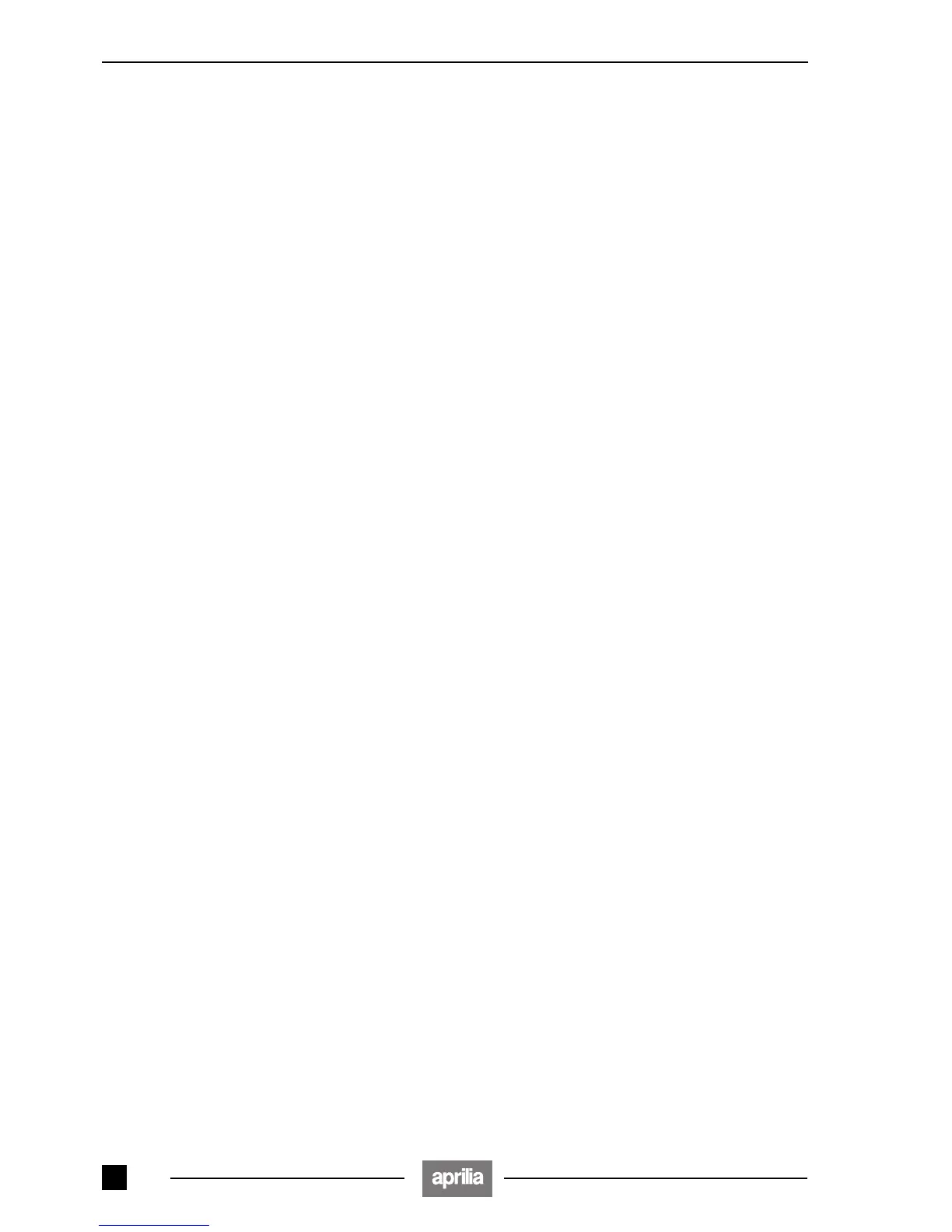